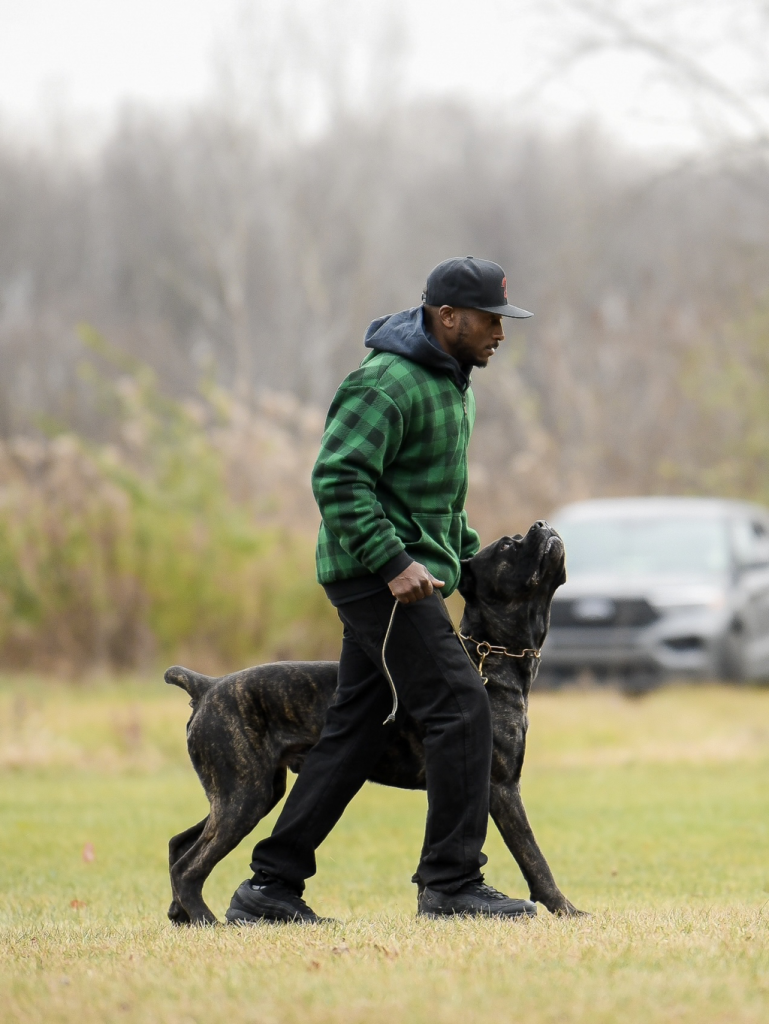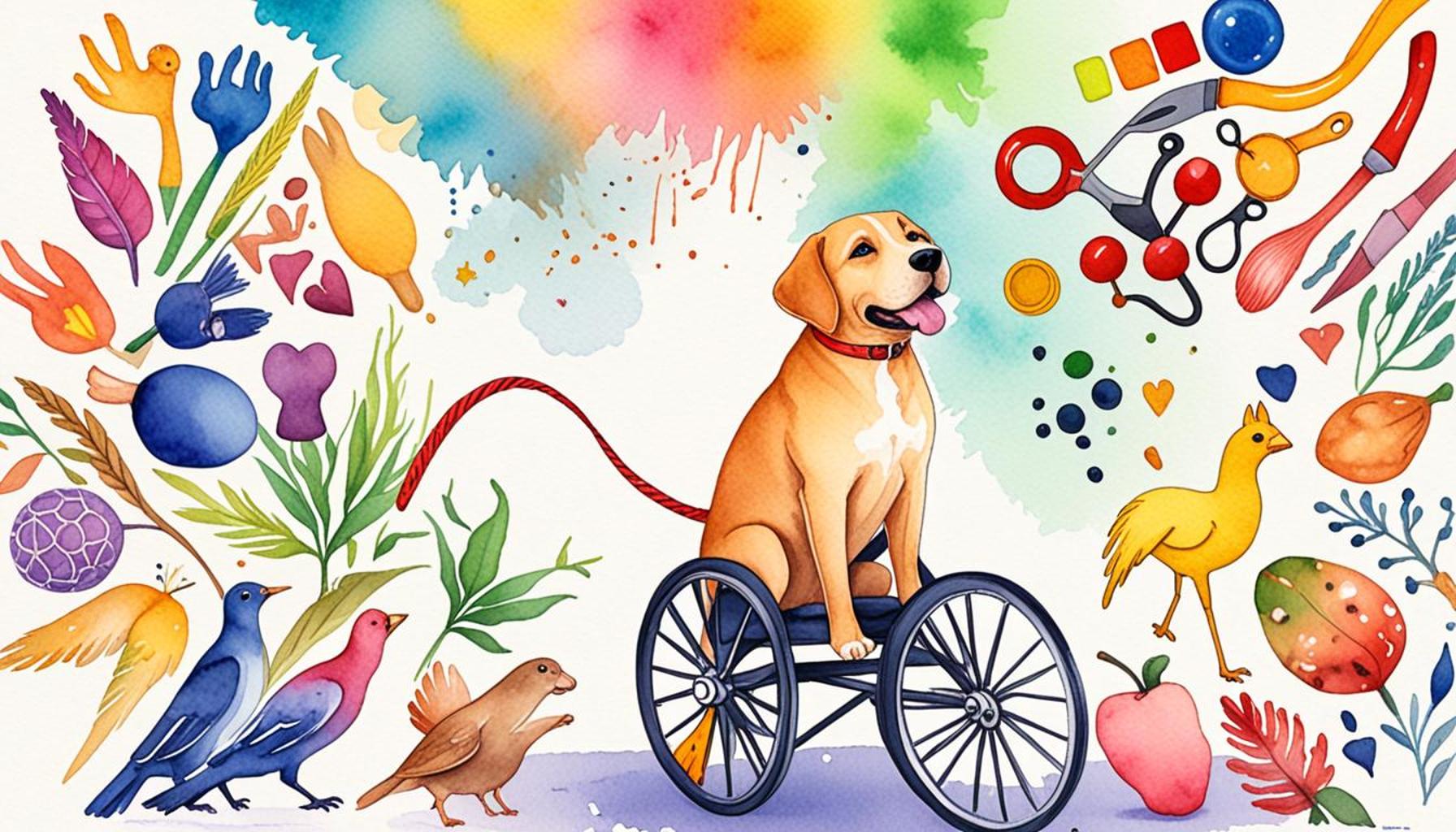Obedience Training for Specific Breeds: Customized Approaches

Understanding Dog Training
Every dog is unique, shaped by its breed and personality. Understanding these differences is crucial for effective obedience training. With specialized techniques, trainers can tailor their methods to suit the needs of various breeds, leading to more successful outcomes and a stronger bond between the owner and their pet.
Key Aspects of Dog Training
When it comes to training, several key aspects should be considered:
- Breed Characteristics: Each breed has distinct traits that influence behavior. For example, retrievers are often friendly and eager to please, making them relatively easy to train, while terriers may have a more stubborn streak, requiring a different approach.
- Learning Styles: Just as humans have different learning styles, so do dogs. Some breeds, like the Doberman Pinscher, excel with positive reinforcement techniques, while others might respond to strict commands more effectively.
- Energy Levels: High-energy breeds such as Border Collies and Vizslas require more dynamic training sessions that incorporate physical activity. This not only helps them to learn but also helps to expend excess energy that might otherwise lead to behavior issues.
For instance, herding breeds like the Border Collie thrive on mental stimulation and often require more complex tasks to keep them engaged. Activities like agility training or even dog sports can be particularly beneficial for these breeds. On the other hand, Mastiffs, which are generally more laid back, may respond better to calm and assertive training approaches that emphasize patience and gentle corrections.
Cultural and Environmental Influences
Moreover, cultural and environmental factors also play a significant role in obedience training. For example, in the United States, urban dwellers, who may live in smaller spaces with limited outdoor access, might focus more on leash training and impulse control, while those in rural areas may have the freedom to allow their dogs off-leash, placing greater emphasis on recall and obedience in open spaces.
To further enrich your understanding of obedience training, it’s essential to recognize how individualized training strategies can lead to better behavioral outcomes. Factors such as age, prior experiences, and even the owner’s own training knowledge should inform the tailored methods used. A young puppy, for example, may benefit from short, fun sessions filled with treats and play, whereas an older dog may need structured, consistent training to reinforce good habits.

In this article, we’ll dive deep into customized strategies that can enhance obedience training for specific breeds. Join us on this journey to discover effective methodologies tailored to your dog’s unique capabilities, ensuring a happier and more well-adjusted companion!
DIVE DEEPER: Click here to learn about positive training techniques
Customizing Training Strategies for Different Breeds
Every breed of dog possesses unique traits and characteristics that can significantly impact their obedience training experience. Recognizing these differences enables trainers and owners to develop customized training approaches that cater specifically to the needs of their dogs. Understanding a breed’s inherent skills, temperament, and instincts helps trainers create suitable exercises that enhance learning and foster a positive training environment.
Recognizing Breed-Specific Traits
One of the foundational steps in obedience training is recognizing and acknowledging the specific traits associated with various breeds. Here are a few examples:
- Herding Breeds: Breeds like the Australian Shepherd and Shetland Sheepdog are highly intelligent and require mental challenges to thrive. They may excel in tasks that involve problem-solving or agility, making these activities ideal for training sessions.
- Working Breeds: Dogs such as the Rottweiler and Siberian Husky are often more independent and can have strong wills. Training for these breeds should incorporate firm boundaries and consistent reinforcement to build respect and facilitate learning.
- Toy Breeds: Smaller breeds like the Pomeranian or Chihuahua can sometimes display stubbornness or defiance. Short, playful training sessions that involve positive reinforcement and a lot of praise may work best for keeping these spirited dogs engaged.
Moreover, environmental factors also play a considerable role in shaping the behavior of specific breeds. For instance, a Golden Retriever living in an active household with children might be more sociable and responsive than one that spends most of its time alone. This highlights the importance of situational awareness when planning training techniques. Tailoring training to include experiences that replicate a dog’s everyday environment ensures they are more likely to understand the commands in real-life scenarios.
Tailoring Methods to Match Learning Styles
Just like humans, dogs exhibit various learning styles that influence their response to training. Some might learn better through visual cues, while others may favor verbal commands or hands-on guidance. For example, a Beagle might be particularly motivated by scents, making scent-related tasks effective for training, while a more visually driven breed like the Border Collie may excel when taught with hand signals along with vocal commands.
Combining these insights with positive reinforcement techniques like treats, verbal praise, or playtime can lead to enhanced engagement and quicker learning. Furthermore, addressing a breed’s typical energy levels plays a critical role in the success of obedience training. High-energy breeds often require bursts of physical activity, while more relaxed breeds may benefit from steady, calm training approaches that incorporate extended focus and patience.
In summary, the key to successful obedience training lies in understanding the distinctive attributes of each breed, from their temperament to their energy levels. By adopting customized training approaches catered to specific breeds, owners can foster an environment that not only encourages learning but also strengthens the bond between pet and owner. In the following sections, we will explore detailed strategies tailored to popular breeds, offering training tips and techniques that align with their unique personalities and needs.
| Training Method | Advantages |
|---|---|
| Positive Reinforcement | Encourages desired behaviors without intimidation. |
| Breed-Specific Techniques | Addresses unique tendencies, leading to more effective outcomes. |
| Socialization Exercises | Promotes confidence in diverse environments, reducing anxiety. |
Understanding and implementing customized approaches for obedience training is essential, especially when considering the unique characteristics of different breeds. Each breed possesses distinct traits and behavioral patterns, thus requiring tailored training methods for effective results. For instance, while positive reinforcement can significantly help in cultivating desired behaviors coexisting harmoniously with companions, employing breed-specific techniques will serve to address their inherent tendencies, fostering quicker and more stable learning experiences.Additionally, introducing socialization exercises can greatly enhance a dog’s confidence, enabling them to adapt positively to various stimuli in their environment. Not only does this approach minimize anxiety among breeds known for being skittish, but it also promotes a well-rounded temperament essential for their interaction with both humans and other animals. Customized training ensures that your efforts yield the most beneficial outcomes for your canine companion, making it an art worth mastering for every dog owner.
DISCOVER MORE: Click here to learn about the best food for your pet
Implementing Specialized Techniques for Popular Breeds
Adopting obedience training methods that resonate with specific breeds is crucial for effective learning and mutual understanding between pets and their owners. As we delve into popular dog breeds, we will discuss specialized techniques that suit their particular needs, focusing on how to optimize training outcomes through customized approaches.
Sporting Breeds: Engaging Through Active Play
Sporting breeds, such as the Golden Retriever and Labrador Retriever, are known for their high energy levels and eagerness to please. These dogs thrive on interaction and often need both physical and mental stimulation. Therefore, integrating their natural love for play with obedience training can be particularly effective.
For instance, training sessions can incorporate games like fetch or retrieve exercises that require the dog to return to the owner with a specific item. Through these activities, a trainer can reinforce commands such as “come,” “drop it,” and “stay,” making the process enjoyable. Additionally, varied environments, like parks or beaches, can add excitement and help these breeds generalize their training in different settings.
Hound Breeds: Patience and Persistence
When it comes to hound breeds like the Beagle or Bloodhound, trainers may face challenges in obedience training due to their independent nature and strong scent drive. These dogs may be easily distracted by smells, making it essential to design training sessions that are both engaging and respect their natural instincts.
Incorporating scent work into training can allow hound breeds to utilize their natural abilities while reinforcing obedience. Activities like scent tracking or nosework exercises can keep them mentally stimulated, and the satisfaction of following trails can foster a positive attitude towards training commands. Additionally, patience is paramount; providing consistent cues and extending practice time without overwhelming the dog will yield better results.
Terrier Breeds: Encouragement through Variety
Terriers, such as the Jack Russell Terrier and West Highland White Terrier, are known for their high energy levels and spirited demeanor. Stubbornness can also be a common trait, which necessitates a unique approach to their obedience training. Keeping training sessions concise and dynamic while introducing variety can help maintain their engagement.
Utilizing interactive toys or challenge-based exercises, where the dog must work to earn treats or rewards, can be beneficial. Furthermore, incorporating agility obstacles can not only encourage proper behavior but also fulfill their need for physical activity. A focus on positive reinforcement, such as clicker training combined with playtime, can foster a deeper bond and create a successful learning environment.
Small Breeds: Socialization and Confidence Building
Small breeds like Dachshunds and Yorkshire Terriers often face unique challenges during obedience training, as they may develop confidence issues or anxiety due to their size. As such, socialization should be a critical component of their training regimen.
Exposing these breeds to various experiences, sounds, and other dogs from a young age can significantly enhance their social skills and reduce fear-based behaviors. Simple obedience commands can be taught in less stressful environments, gradually increasing the challenges. Utilizing treats and praise can help reinforce positive reactions, building their confidence as they learn.
In summary, the responsibility of trainers and owners goes beyond just teaching commands; it encompasses understanding each breed’s unique characteristics and devising tailored training plans accordingly. By aligning methods with the specific needs and learning styles of different breeds, trainers can create a productive and fulfilling experience that promotes good behavior and strengthens the human-animal bond.
DON’T MISS: Click here to discover why a balanced diet is crucial for your pet’s health
Conclusion: Nurturing Better Bonds Through Customized Training
In the realm of obedience training, a one-size-fits-all approach simply doesn’t apply. As highlighted throughout this article, each dog breed exhibits unique traits and behaviors that necessitate customized training techniques. From the high-energy sporting breeds who thrive on play to the independent yet scent-driven hound breeds, and from the spirited terrier breeds seeking variety to the sometimes anxious small breeds requiring confidence-building socialization, understanding these nuances can transform the training process.
Investing in breed-specific training not only helps owners achieve more effective results but also fosters a deeper, more trusting relationship between pets and their humans. Techniques that utilize inherent traits—such as engaging games for sporting dogs or scent exercises for hounds—create a learning environment that is both stimulating and enjoyable. This approach maximizes the potential of each breed while minimizing frustration for both trainer and dog.
As prospective and current dog owners consider obedience training for their beloved companions, embracing the significance of a tailored approach is essential. By recognizing and respecting each dog’s individuality, we ensure not just compliance with commands but also the overall well-being and happiness of our furry friends. So, delve deeper into the specific needs of your dog’s breed, and embark on a journey that promotes harmony, mutual respect, and enriched companionship. The rewards of this dedication are boundless, leading to a joyful and obedient dog that becomes a cherished member of the family.


